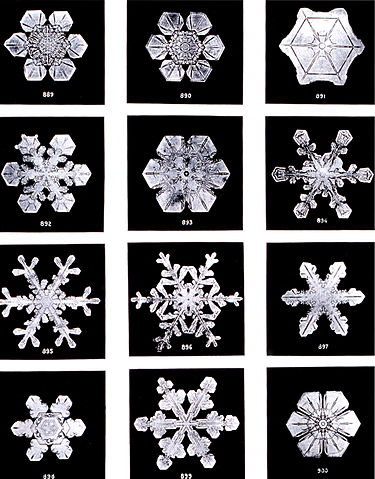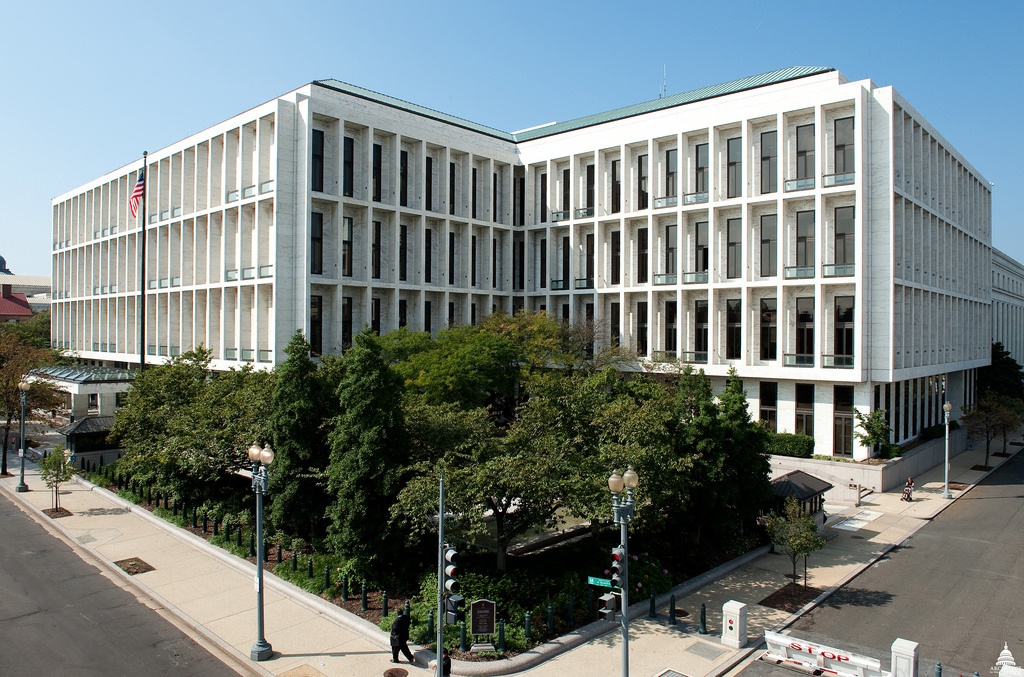Wilson “Snowflake” Bentley was born in my home town of Jericho, VT in 1865. The town is situated in Vermont in a unique way that allows for a lot of annual snow (by Vermont standards). Not only does Jericho get a lot of snow, but we also seem to be situated in such a way that we get perfect snowflakes that don’t clump together. This is what allowed Mr. Bentley to become one of the first known snowflake photographers. He invented his own way of catching flakes using black velvet so they wouldn’t melt or evaporate before he could snap a picture of them.
 By Wilson Bentley - Plate XIX of "Studies among the Snow Crystals ... " by Wilson Bentley, "The Snowflake Man." From Annual Summary of the "Monthly Weather Review" for 1902., Public Domain, https://commons.wikimedia.org/w/index.php?curid=22130
By Wilson Bentley - Plate XIX of "Studies among the Snow Crystals ... " by Wilson Bentley, "The Snowflake Man." From Annual Summary of the "Monthly Weather Review" for 1902., Public Domain, https://commons.wikimedia.org/w/index.php?curid=22130
Mr. Bentley invented a way to buy himself the time he needed to accomplish his goal. As a result, he changed the way humanity understood snow. We now understand that these fragile, fleeting, complex, and temporary ice crystals are individually unique works of art created by nature. We can now picture in our heads how each storm is a universe of fractalized prisms drifting gracefully to the ground. Each universe is destined to melt, evaporate, and return to us (hopefully) in next year’s winter. Each cycle containing an unnoticed complex beauty that requires some work and ingenuity to even observe.
Energy savings measures in buildings are also complex, unique, and beautiful in their own way. Each approach starts liquid, unformed. A malleable idea in someone’s mind. As we work towards implementation, it begins to solidify-- it becomes a network of actions each of which is dependent on the outcome of the action that came before it. Energy savings measures grow in complexity proportional to their reach or scope. In the end, they result in a solid structure of changes within a building that is visible with a little hard work.
The trick with energy savings, much like with snowflakes, is to try to retain them; to make the savings persist. Like a snowflake, they can evaporate over time. It takes some more hard work to show the people who are responsible for decision making in a building what a complex and beautiful thing those energy savings are, and how fleeting they can be in the face of an override or a decision to save first cost.
I am fearful that because of humans’ behavior over the last 50 to 100 years and our current political climate, that we will be seeing less snow in our future. The world will be that much less beautiful as a result.
I do not want to live in a Vermont without snow. I do not want that for my children or grandchildren either. So, I will endeavor to be like Mr. Bentley and invent a means to buy myself time to change the world and save the snow. I encourage you to start 2019 the same way.
Happy New Year!
*Reposted from 12/29/18


